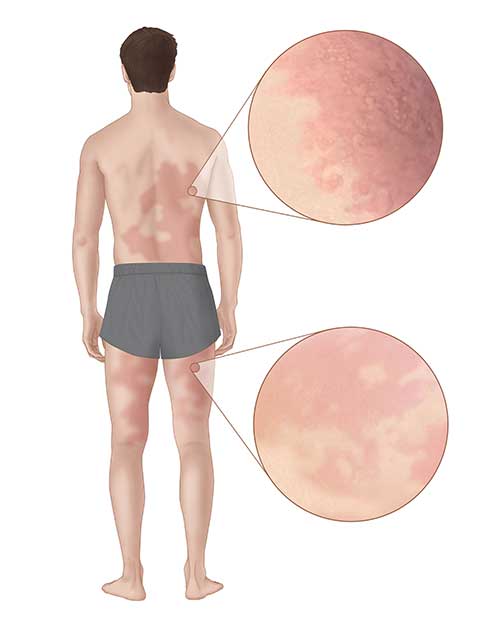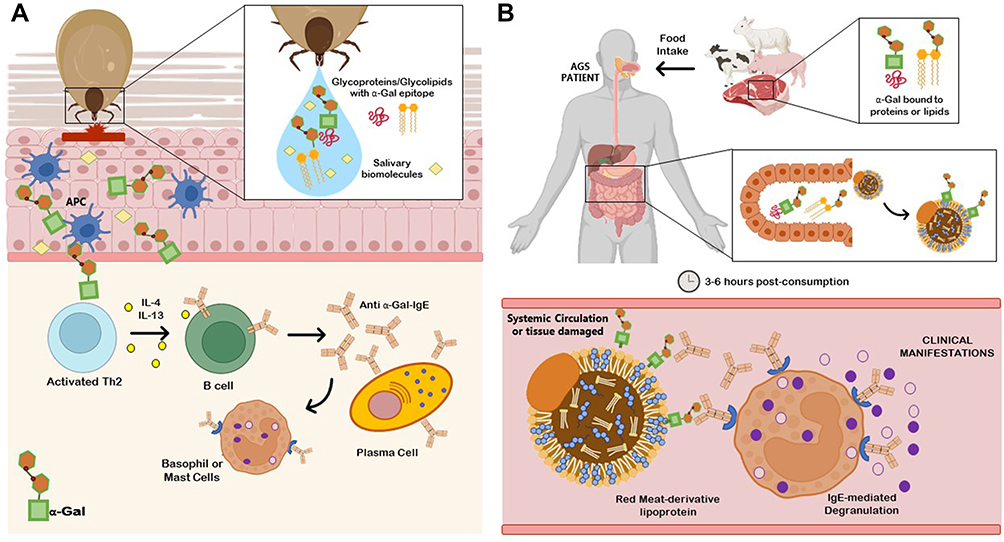Alpha-gal syndrome: What you need to know
A food allergy to meat, dairy, and other goods derived from mammals is known as alpha-gal syndrome (AGS). It is also referred to as an allergy to alpha-gal, red meat, or tick bites. AGS is brought on by a tick bite from one that has the alpha-gal sugar molecule in its body. The tick injects the alpha-gal chemical into your body when it bites you. When they consume items from mammals, this may provoke allergic reactions in certain people to alpha-gal.
Because it is a recent allergy, little is known about AGS. But it is growing more wide spread, particularly in the United States. The lone star tick is the tick that transmits AGS most in the US. The eastern and south-central parts of the nation are where you can find lone star ticks.
Symptoms of AGS:
Symptoms of AGS can vary from person to person and can range from mild to severe. Some common symptoms include:
- Hives
- Itching
- Swelling
- Anaphylaxis
- Diarrhea
- Vomiting
- Stomach cramps
- Difficulty breathing
- Wheezing
- Tightness in the chest
Symptoms of AGS typically begin within 2-6 hours of eating a food that contains alpha-gal. However, they can sometimes start sooner or later.
Identifying AGS:
It's crucial to get tested by a doctor if you suspect you have AGS. Since no one test can diagnose AGS, clinicians often combine many tests, such as:
- physical examination and medical history
- Blood test for allergies
- IgE test for alpha-gal specificity
- Test on a skin prick
Treatment of AGS:
The only method to stop an allergic reaction from occurring is to stay away from all foods and products that contain alpha-gal. AGS has no known cure. This can be difficult because alpha-gal is present in many foods and goods, such as:
- Red meat (beef, pork, lamb, goat, venison, etc.)
- Dairy products (milk, cheese, yogurt, ice cream, etc.)
- Gelatin
- Collagen
- Lard
- Tallow
- Some medications
- Some cosmetics
- Some pet foods
When eating out, it's crucial to read food labels and inquire about the ingredients. When outdoors, it's also essential to apply tick repellant.
You must get medical help right away if you do get an alpha-gal response. Antihistamines, epinephrine, and corticosteroids are used as treatment for alpha-gal responses.
Adopting an AGS:
Although it can be difficult, it is possible to live with AGS. There are many tools at their disposal to assist those with AGS in managing their condition. Among these resources are:
- support groups for alpha women
- dishes suitable for alpha-gals
- Alpha-gal listings of foods
It's crucial to collaborate with your doctor to create a specialized management strategy for your AGS.
Here are some more pointers for managing AGS:
- Alpha-gal-containing foods and products should be avoided.
- Analyze food labels .
- When dining out, inquire about the ingredients.
- When outdoors, use insect repellent to prevent ticks.
- In case you have a reaction, have a strategy in place.
- Together with your physician, create a specific management strategy for your AGS.
Conclusion:
AGS is an intolerance to foods including meat, dairy, and other items derived from mammals. It originates from a tick bite that contains the alpha-gal sugar molecule. AGS symptoms can vary from moderate to severe depending on the individual. The only method to stop an allergic reaction from occurring is to stay away from all foods and products that contain alpha-gal. AGS has no known cure. Although it can be difficult, it is possible to live with AGS. There are many tools at their disposal to assist those with AGS in managing their condition.



Comments
Post a Comment